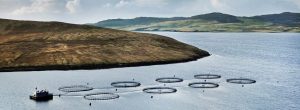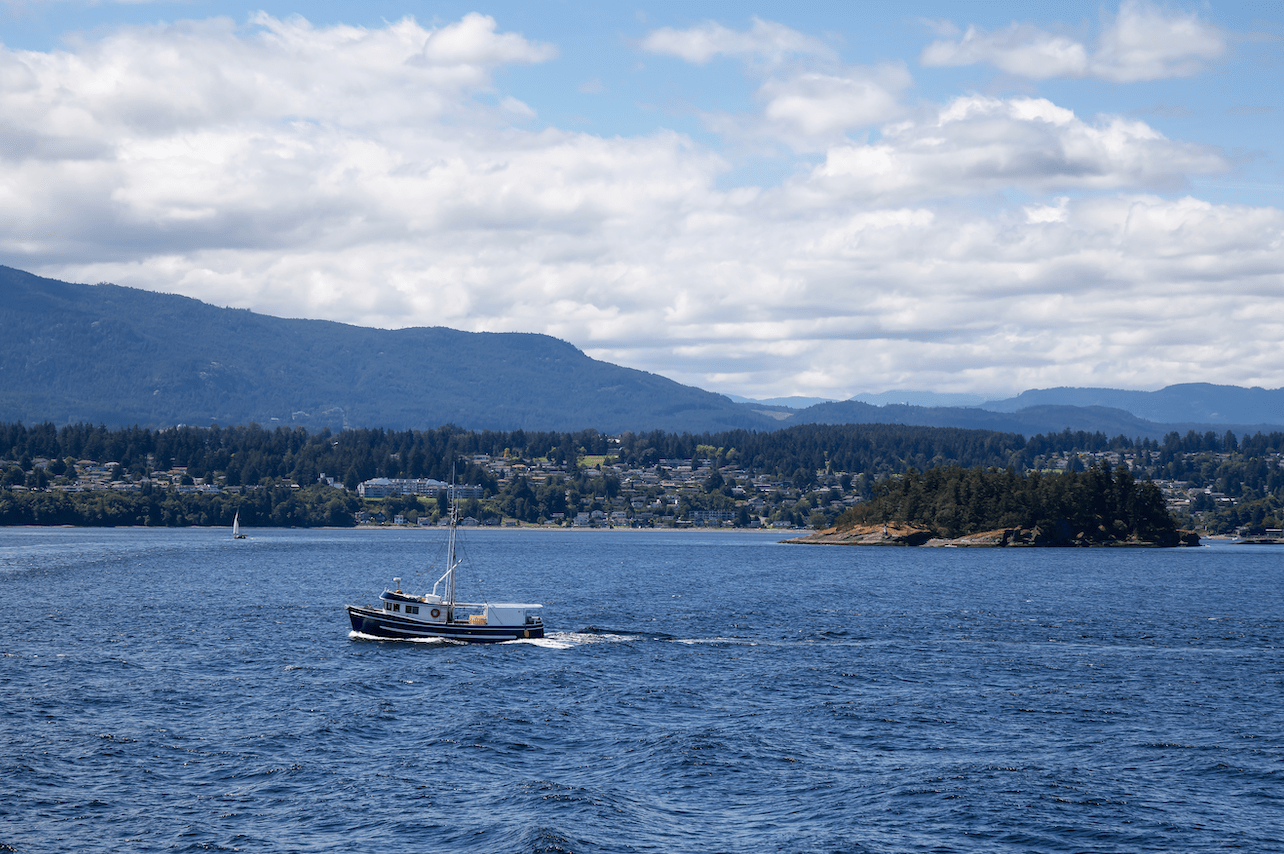
griegseafood.com/bc
CAMPBELL RIVER – Campbell River-based Grieg Seafood has entered into a sales purchase agreement with Scottish Sea Farms for the sale of the Shetland operations for GBP 164 million. The transaction is expected to close within Q4 2021, depending on processing time with relevant competition authorities and some other customary closing conditions. The transaction will leave Grieg Seafood in a strong financial situation and provide room to engage in growth initiatives in Norway and Canada in line with the Group’s strategy.
Financial Results
The Group harvested 17,812 tonnes ex. Shetland in Q2 2021, down 12 per cent compared to 20,140 tonnes in Q2 2020.
The average spot salmon price (NQSALMON weekly average less distributor margin) for Q2 2021 was NOK 62.1 per kg, up by NOK 5.2 per kg compared to Q2 2020, and up by NOK 9.3 per kg compared to Q1 2021.
Sales revenues from continuing operations amounted to NOK 1 122 million, a decrease of 4 per cent compared to Q2 2020. The price achievement in BC was strong, however, in Norway the price achievement was impacted by downgraded fish and fixed price contracts. In Finnmark, the price achievement was in addition impacted by low average harvest weight and harvest towards the end of the quarter with lower spot prices.
Compared to Q2 2020, the difference in price achievement, measured as sales revenue/kg, had a positive contribution to the EBIT by NOK 88 million. The lower harvest volume impacted the EBIT by NOK -10 million, while increases in operational costs, including Newfoundland, impacted the EBIT before production fee and fair value adjustment of biological assets by NOK -99 million compared to Q2 2020.
Group farming cost (total cost related to fish harvested this quarter) increased compared to the same quarter last year, primarily due site-specific conditions, winter ulcers, ISA and higher costs recognized as abnormal mortality of biological assets.
The Group’s EBIT before production fee and fair value adjustment of biological assets was NOK 44 million (NOK 47 million) during the quarter, corresponding to an EBIT per kg of NOK 2.4 (2.4).
Strategic Priorities
The disposal of Shetland represents an important milestone in Grieg Seafood’s communicated strategy to concentrate future farming activities in Norway and Canada, where the Group sees the largest potential for profitable growth.
Concentrating focus, resources and investments to the Norwegian and Canadian farming regions, as well as a strengthened balance sheet, will enable Grieg Seafood to better pursue opportunities for sustainable growth in these geographical areas and strengthen the execution of the 2025 strategy. Operational improvement is a key priority, and focus areas remain post-smolt, digitalization and improved fish health and welfare.
Newfoundland will be the main growth driver going forward. The region will strengthen the Group’s exposure to the world’s largest and fastest growing market for Atlantic Salmon and provide synergies with its existing North American operations. Grieg Seafood is taking a cautious approach when developing this new farming region, with the aim of ensuring future biology and sustainable farming, which is also why it was decided to postpone smolt release to next year.
A first step in repositioning Grieg Seafood from a supplier to an innovative partner of salmon was taken in the quarter, with the transfer of all global sales activities to its new sales and market organization. As a next step, the Group is developing a new plan for processing and VAP throughout its regions, aiming to increase value, utilize synergies, and reduce loss caused by negative biological events.
Outlook
The underlying market demand was high during the quarter, driven by supermarkets and grocery stores, demonstrating a strong trend for fresh salmon. Despite high global supply growth in Europe in the second quarter 2021, up 8 per cent QoQ, salmon spot prices remained at healthy levels. Prices in the USA surprised on the upside and increased to record high levels, following a period of negative supply growth in the Americas. This also positively affected demand for Norwegian salmon to Americas, with Norwegian exports to the US market strongly up in the quarter.
Grieg Seafood expects an even stronger demand response when the HoReCa market in Europe normalizes, which is expected to happen gradually as an increasing number of countries ease Covid-19 restrictions as vaccination programs progress. Supply is expected to come down going forward, mostly driven by negative biomass growth in Americas. This has led to a cautious optimistic sentiment, reflected in an upward revision of the forward price quotes on Fishpool to NOK 58 per kg for Q3 2021, and NOK 62 per kg for Q4 2021 and for 2022.
Grieg Seafood targets a contract share of 20-50 per cent. Estimated contract share for 2021 is 28 per cent of the Norwegian harvest volume, or 23 per cent of total volume for the year.
In the third quarter of 2021, expected harvest volume is 21 700 tonnes, distributed by region as follows:
- Rogaland: 7 000 tonnes
- Finnmark: 10 000 tonnes
- BC: 4 700 tonnes
Grieg Seafood maintains its 2021 harvest volume target of 80,000 tonnes ex Shetland, and long-term harvest volume target of 130 000 by 2025.
“During the second quarter, Grieg Seafood took new and important steps towards a post-pandemic recovery. The market is getting better, prices are increasing, and biology is improving across the regions. At the same time, we still experienced some bumps in the road. I am not satisfied with an EBIT of NOK 44 million,” said Andreas Kvame, CEO of Grieg Seafood ASA.
“British Columbia was a highlight with stable biological control for yet another quarter, coupled with high prices in a strong US market. Rogaland delivered a satisfactory result, while Finnmark remained impacted by remnants of the challenging biology from last winter. Several actions are taken to avoid similar severities during future winters, from changes in our approach to transferring fish to sea and new vaccine strategies to more post-smolt and VAP capacity. We are also continuing to develop our Newfoundland region responsibly and step by step. To increase chances of optimal biological conditions in sea, we have postponed transfer of fish to sea until next spring. Beyond this postponement, the project is on track, with millions of fish currently growing healthy and well in the fresh water facility. The potential for Newfoundland remains in the medium and longer term, underpinned by the strong and growing US salmon market next door,” Kvame further commented.
“During the second quarter, Grieg Seafood also reached several milestones towards delivering on our 2025 strategy. First and foremost, we executed our plan to narrow the company’s focus to Norway and Canada as our two robust farming regions. We entered a sales purchase agreement with Scottish Sea Farms to sell our Shetland operations for GBP 164 million. Substantial improvement efforts over several years are completed in the region, resulting in a profit for the quarter. The sale and high price leave us in a strong financial situation and provides room to engage in growth initiatives in Norway and Canada in line with our strategy.”

